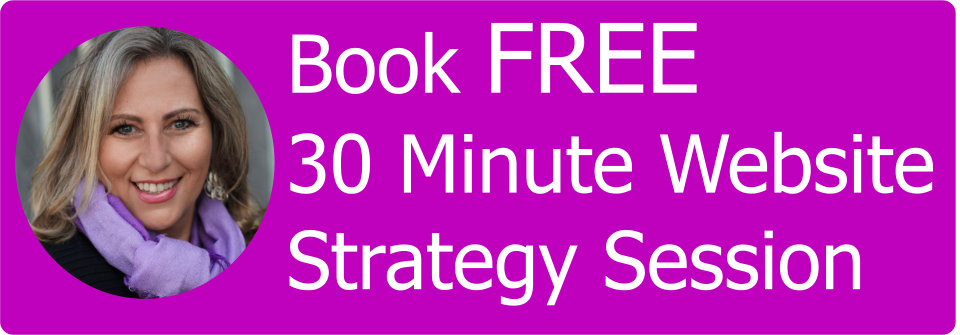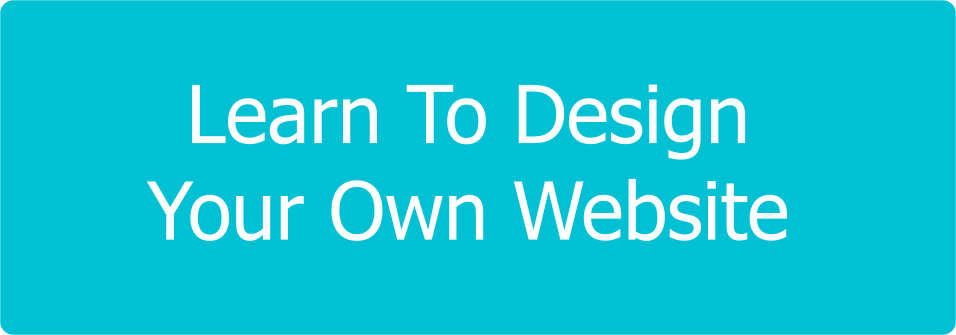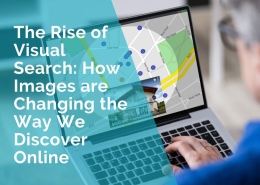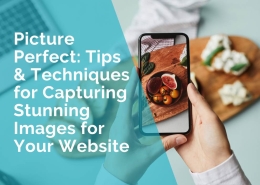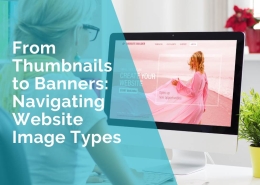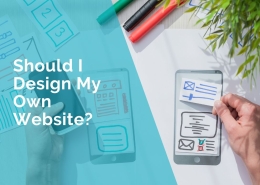FAQs – Everything You Need To Know About Creating A Website
For many entrepreneurs, getting a website designed is a very scary and overwhelming task. Most people don’t know where to start, what questions to ask and they don’t understand the process. So if you are thinking of getting a website designed, here are answers to some frequently asked questions, which you may have wanted to ask:
1. What is a domain name?
A domain name is like a street address or telephone number. The domain name points visitors to you on the Internet. The domain by itself is not your email or web address. The domain name, however, forms the base from which these addresses are derived. For example:
Company Name: Websites 4 Small Business
Domain Name: web4business.com.au
Web Address: www.web4business.com.au
Email Address: info@web4business.com.au
2. Do I need to register a domain name to have a website?
The simple answer is NO. You do not need to have your own domain name. Your website can be created and hosted without it. Your website address will look something like this:
www.web4business.com.au/JBCleaning OR
www.ozemail.com.au/~JBCleaning
The only advantage of not registering a domain name is that you will save yourself a few dollars.
The disadvantages of NOT having your domain name include:
(a) If you decide to change your webhosting company or if that company goes out of business, you will lose your website address. Your website can be transferred to a new company, but your address will change. And that means re-printing stationery and re-doing all your advertising, notifying all your customers etc.
(b) Website addresses that contain information other than your company name are long and hard to remember and do not appear as professional. Compare these two and see which one you are more likely to remember
www.ozemail.com.au/~JBCleaning OR
www.JBCleaning.com.au
So it is a good idea to register a domain name, even if it is just to protect yourself for the future.
Say for example, your business name is JB Cleaning and you decide not to register your domain name for now. Along comes Joe Bloggs who opens his own cleaning business and registers JBCleaning.com.au domain name. After a year you decide you want to have your own domain name, but since Joe Bloggs already owns it, you won’t be able to register it. Not to mention your customers who know your business as JB Cleaning may visit his website, thinking it’s your web address and instead hire Joe Bloggs Cleaning.
3. How do I find out if my domain name is still available?
Once you have decided on the domain name that you would like to register, you need to check if it is available. To find out, simply go to to www.web4business.com.au
4. What do I do if my domain name has been registered by someone else?
PANIC! Just kidding!!! Simply call your web designer who can recommend alternative names that would be suitable for your business.
5. How do I choose a design for my website?
The best way to start is by choosing a colour scheme – 2-3 colours are the best. If your company has a logo or preferred colours on its stationery that’s a good start. For those of you starting from scratch, choose two or three complementary colours and stick with them – don’t change colours on every page.
If you’re not sure what colour scheme to choose, surf the internet and find a website that you like. You can then model your colour scheme on what already exists.
Can’t find a website you really like? Another option is to choose a template. There are many templates or pre-set designs. These come as part of your web design software or you can check out some websites that specialise in designing templates.
These templates can be customised to suit your business. Templates are great, as they allow you to see what your website will look like before you spend any money. One suggestion for using templates – if you are planning to add a lot of your own pictures and photos, stick to a neutral, basic website which doesn’t have any graphics. This way your photos will stand out, instead of competing for attention.
Naturally, your designer is a good source of information. If you are looking for a custom website, he/she can design one for you from scratch, but knowing your preferable colours is a great help.
6. How do I ensure my website is customer friendly?
(a) Provide an easy to use navigation system.
This is one of the most important issues to consider when designing a website. You need to ensure your visitors can find what they are looking for easily. Most websites either display their navigation bar on the left or at the top. And since most people are used to this type of navigation, it’s best to stick with it.
Please make sure your navigation bar is on every page, as visitors may not arrive at your website via your homepage. Because most Search Engines index your webpages by their content, one of your secondary pages may rank higher than your homepage. And if you don’t have a navigation bar, your visitors won’t have anywhere else to go.
It also helps to include your navigation bar at the bottom of each page to save your visitors from having to scroll back to the top.
(b) Don’t go overboard on special effects
Whilst it is ok to have one or two special effects to jazz up your website, spinning graphics and logos often distract your visitor from the content, not to mention they can take too long to download. Your visitors may click away even before your spinning logo finishes loading.
If your website contains special effects that require extra software to be downloaded, you can be sure that 99% of people will not bother and will leave your website immediately.
When including pictures and photos, please ensure they are the smallest possible size so that they download quickly.
(c) Backgrounds
Make sure your visitors can read the text on the background, ie. no black writing on dark blue background or yellow on white. Also be careful that your links are visible before and after being visited. The default for links in most programs is blue (before being visited) and burgundy (after being visited), so if you have a dark background, ensure your links are light.
Stay away from busy backgrounds that distract from the content. White is still the most popular choice for background and it is so for a reason. It looks clean and is easy to read. If you wish to add a little more oomph to your website, add colourful headings or pictures.
(d) External Links
It is a good idea to open links to other websites in a new window. That way your visitors can easily return to your site when they are finished browsing the external link.
(e) Site Map & Search Feature
If your website is more than 15 pages long, it is useful to have a site map or a “Search” feature to ensure your visitors can easily find what they’re looking for. A site map is simply a text index of your website.
(f) Content is King
While it is important that your website looks clean and professional, it is far more important that you concentrate your efforts on the content and promotion. Don’t spend too much time worrying about whether Betty Jones will like your buttons. She has come to your website for information, not to criticise your buttons and headings.
If you want a professional website, things to stay away from include:
1. Flash intros, revolving globes, bevelled line separators, animated mail boxes
2. Loads of pop up or pop under boxes
3. Autoplay music. Allow your customer to play music only if they choose.
4. Hit counters of the free variety, which say “you are 27th visitor”
5. Date and time stamps, unless your website is updated daily or weekly
6. Busy backgrounds.
7. What pages should I include my website?
Before you start thinking about what to write on each page of your website, it is important that you create a plan, which lists all the pages you wish to include. Below is a list of the most commonly used pages:
(a) Home Page (First Page)
(b) Products / Services
(c) Contact Us
(d) Pricing
(e) Testimonials / Product Reviews / Before & After
(f) Frequently Asked Questions
(g) Response form such as “Subscribe” or “Enquiry” form
(h) On-line Magazine or Newsletter
(i) Resources/Articles
(j) About Us
(k) Guarantee
(l) Survey
(m) Events Calendar
(n) Search My Website Feature
(o) Return/Refund Policy
(p) Privacy Policy
(q) Site Map
(r) Copyright Information
(s) Links
(t) Media Information
(u) News
(v) On-line store
(w) Blog
8. What’s a web hosting company? Do I need one?
A web host is a company that provides server space for your website. You can think of a web host as a commercial building. The web host provides space for your website just as a commercial building provides space for your shop or office. You can build your own building and you can host your own website, but because of the cost and expertise required it is easier to rent the space. Without a web hosting company, nobody will be able to see your website.
9. Do I really need a website?
If you consider the benefits, the answer is pretty clear:
(a) Save time – Don’t spend hours on the phone, direct customers to your website, where you can provide all the information they need. Whether it be your product or service list, pricing, business hours or simply directions to your bricks and mortar shop.
(b) Save money on advertising – Instead of paying for large ads, simply advertise your website
(c) Be flexible in your message – Change the content as your business changes. No need for expensive brochure or flyer reprints.
(d) Save money on postage – Email customers news about your products instead. It doesn’t cost you anything.
(e) Gain exposure to new customers – You will reach more local clients as well as interstate and global markets.
(f) Have a more professional image – Keep up with the times and your competitors. If your clients are asking whether you have a website, now you can answer “I will tomorrow”.
(g) Have your business open 24/7. Provide customers information when THEY need it. If you don’t someone else will.
10. How much does it cost to get a website?
The cost of the website generally depends on its functionality. For example an informational website is much cheaper than a website that features an on-line store. There are 3 components to having a website:
(a) Domain name
(b) Webhosting
(c) Website Design & Functionality
Hopefully this article has answered some of your questions about getting your business on the internet. If there is anything else you’d like to ask, please contact me directly – ask@web4business.com.au
Ivana Katz makes it easy for you to get your business online very quickly. If you’re looking for a professional and affordable website designer, visit www.web4business.com.au and download a free website plan.
*****
by Ivana Katz
Websites 4 Small Business – www.web4business.com.au; Learn to Design – www.learntodesign.com.au/
Ivana makes it easy for you to get your business online very quickly. If you’re looking for a professional and affordable website designer, CLICK HERE and download your FREE copy of “Ultimate Website Design Secrets Blackbook – 10 Bulletproof Strategies for Designing an Outrageously Successful Website”



